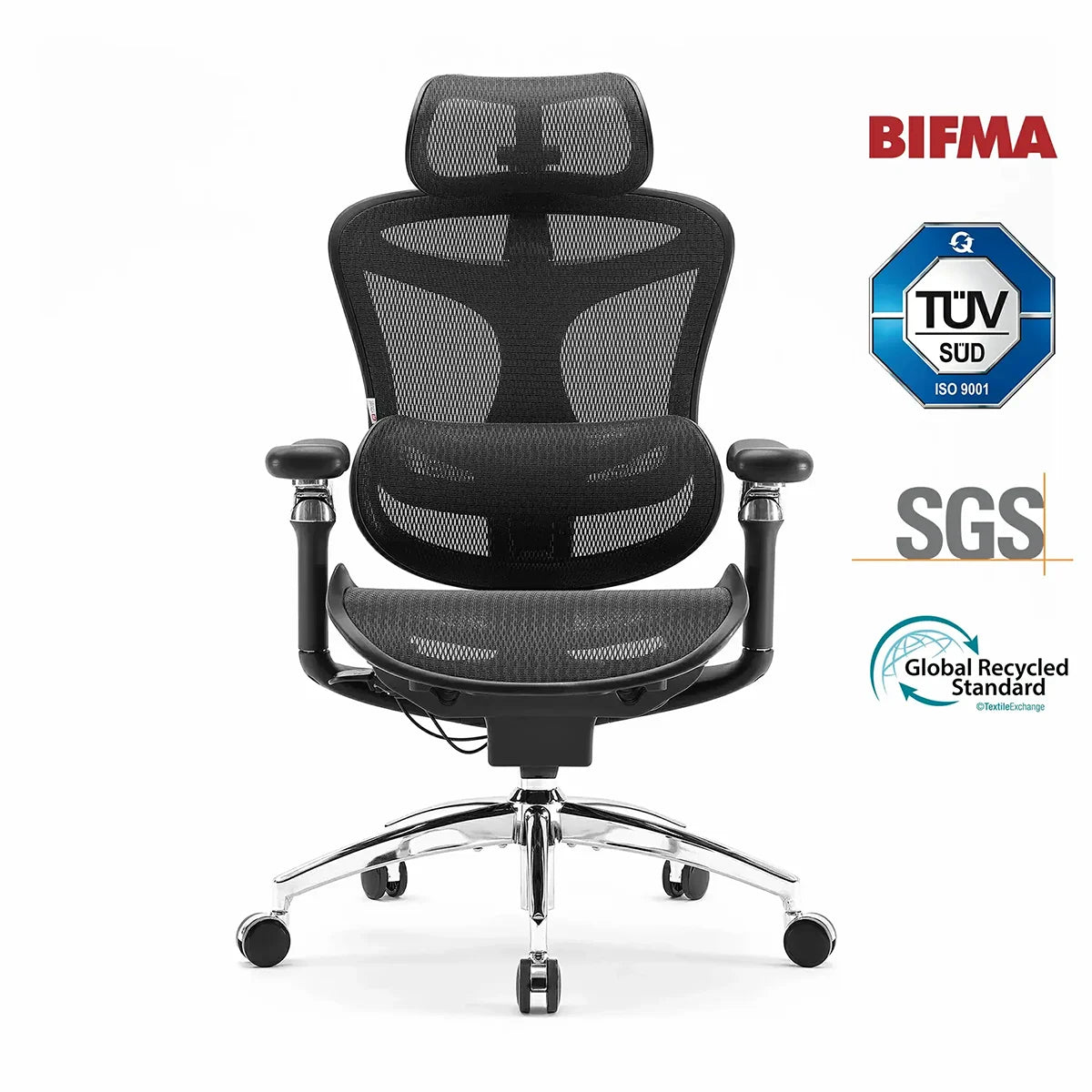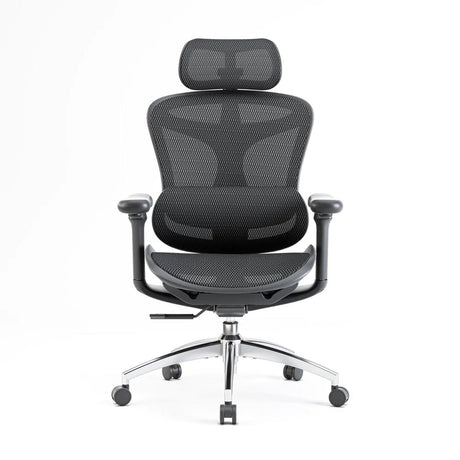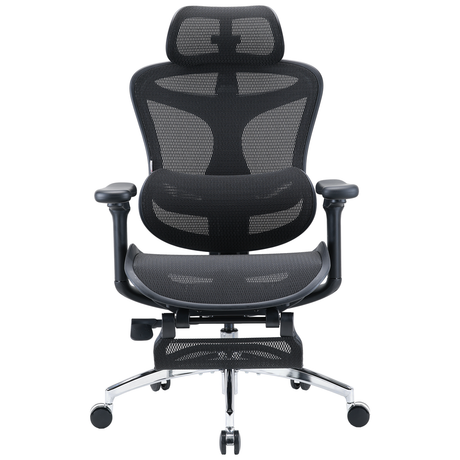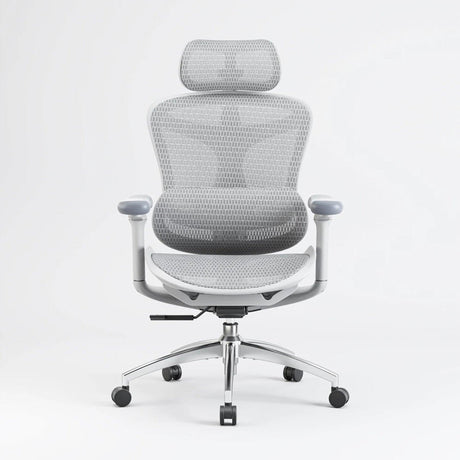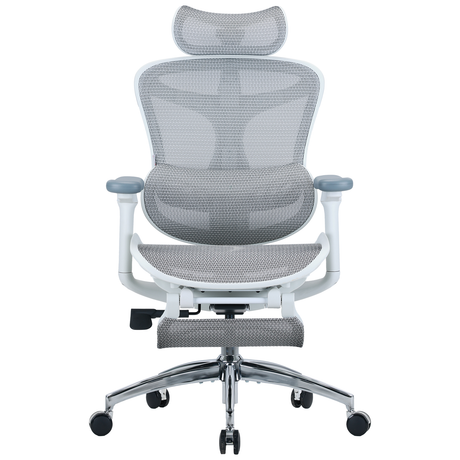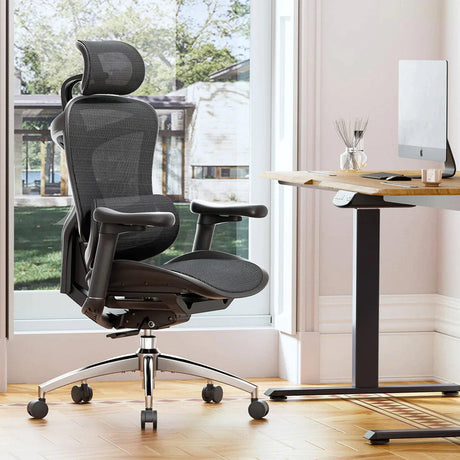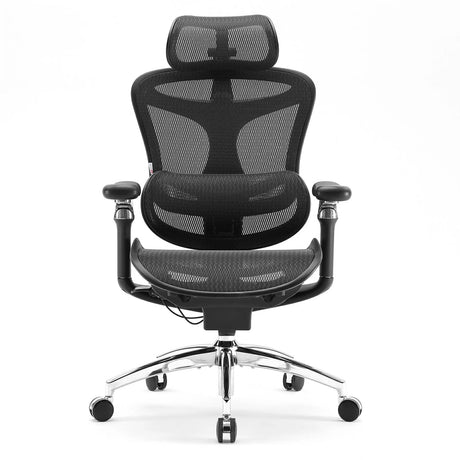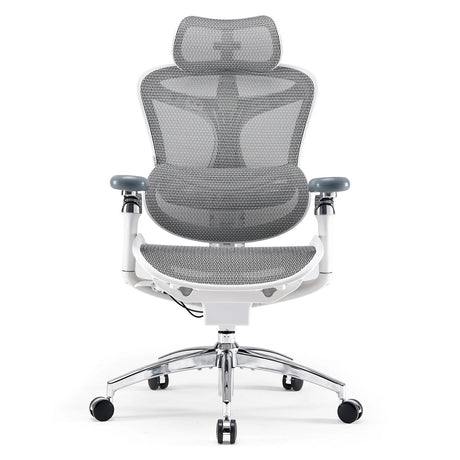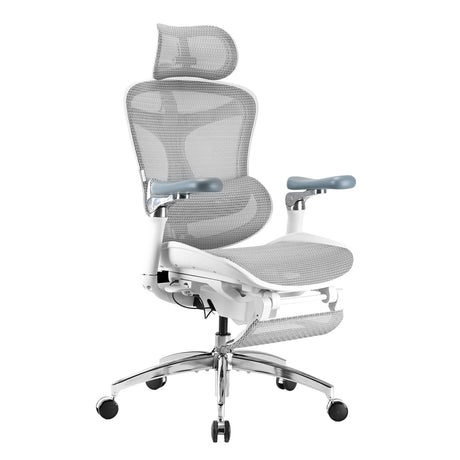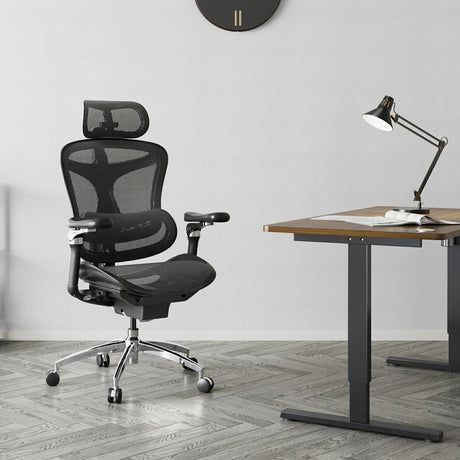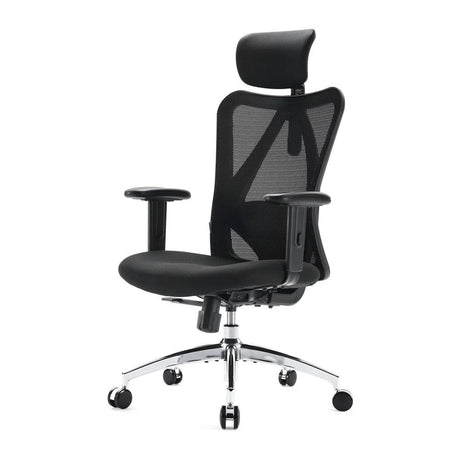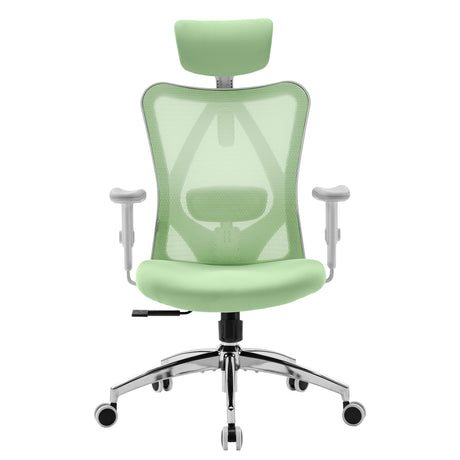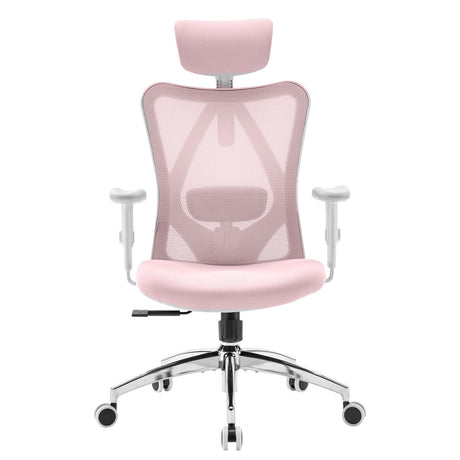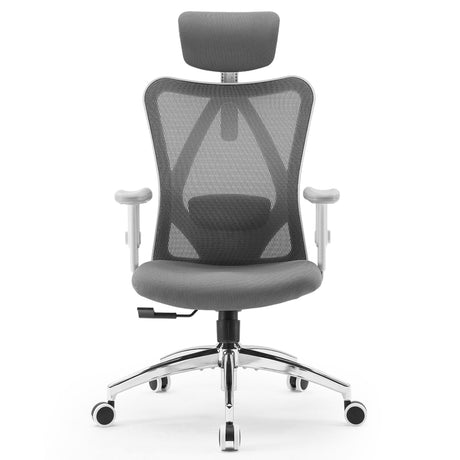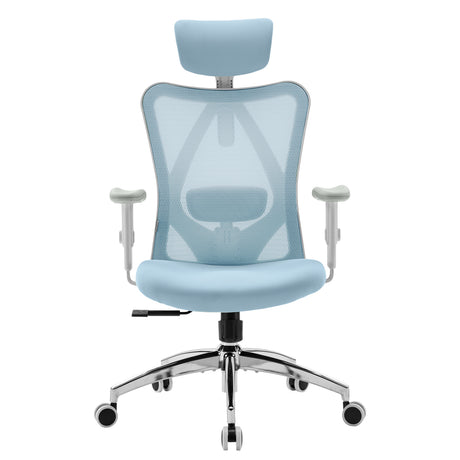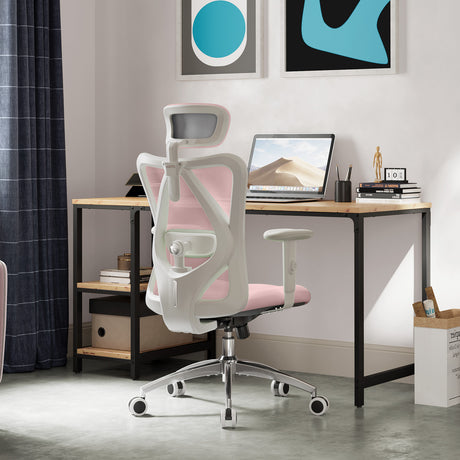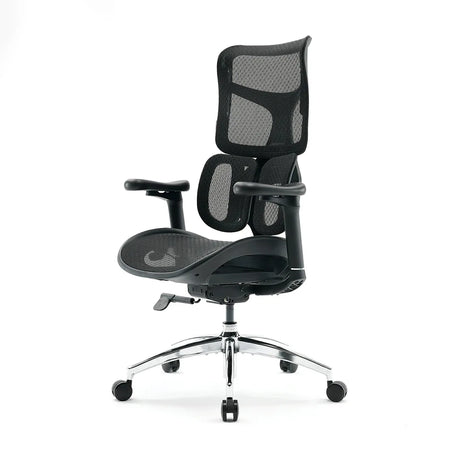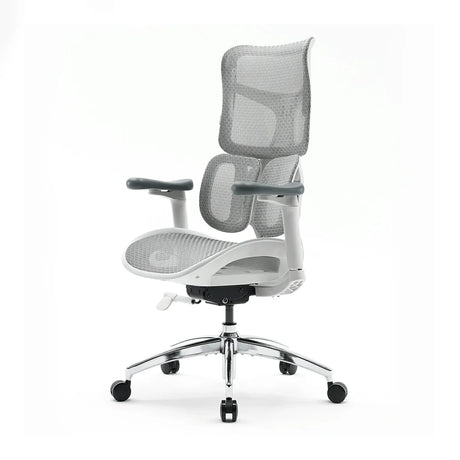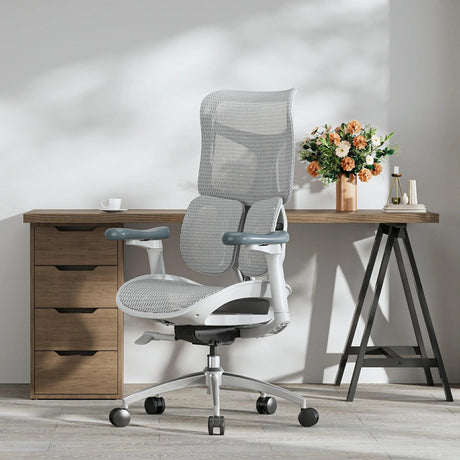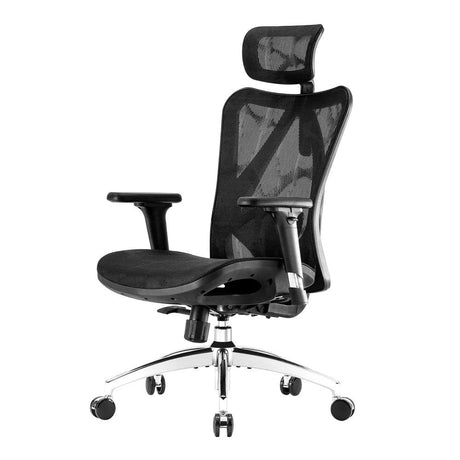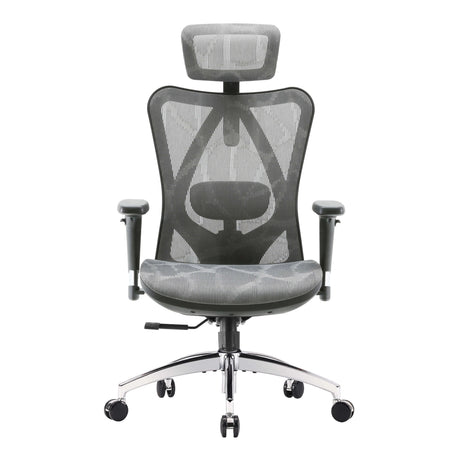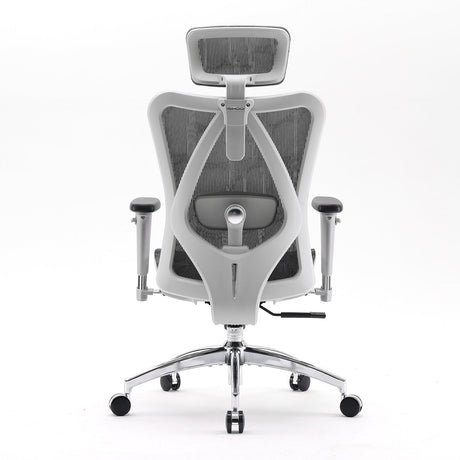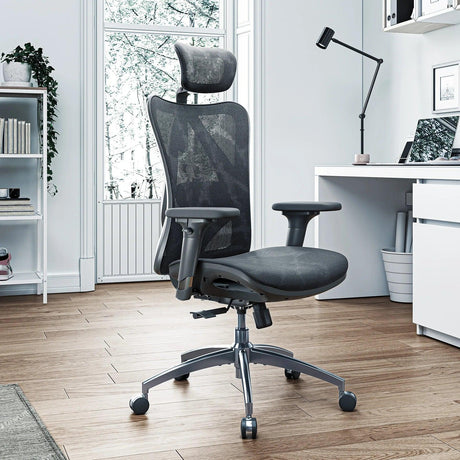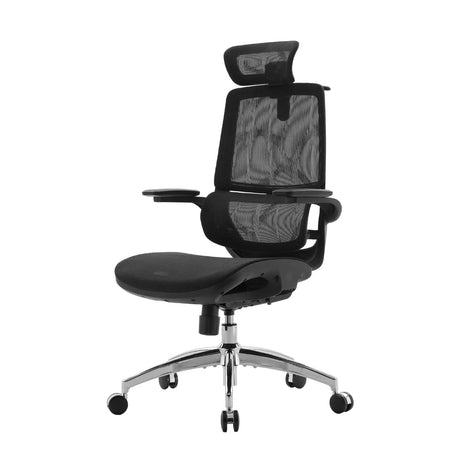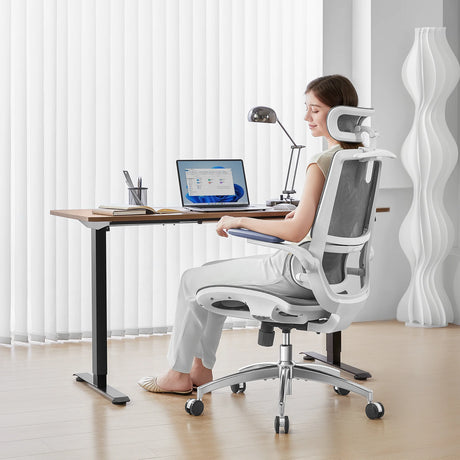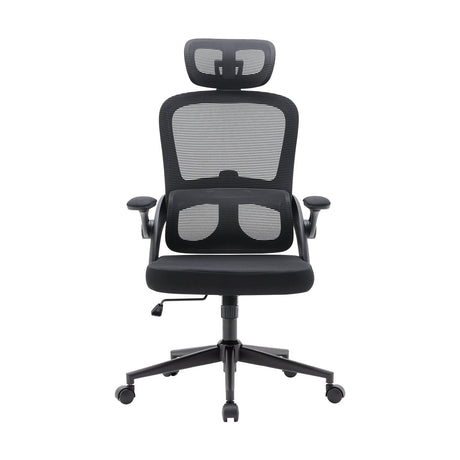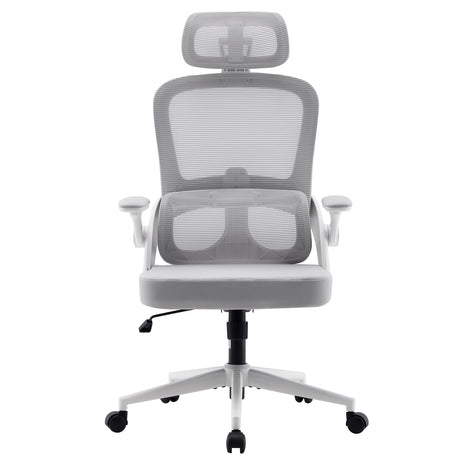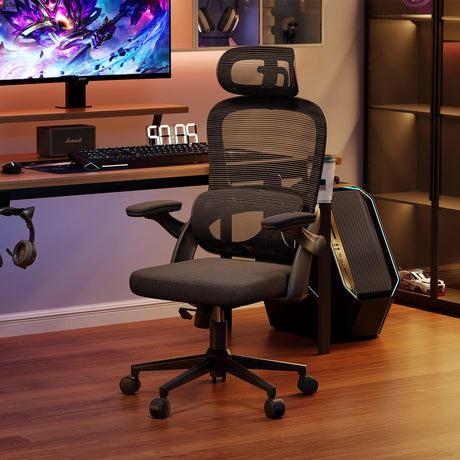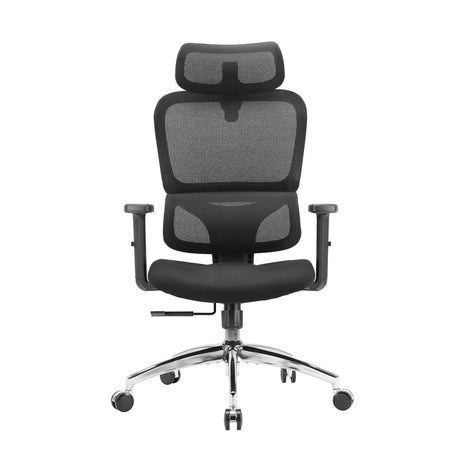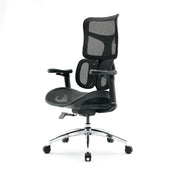Remote work, marathon study sessions, and digital juggling have made focus and comfort non-negotiable must-haves today. This is especially true for those with ADHD, who often struggle to stay settled, manage restlessness, and find physical ease in their workspace. The right ergonomic office chair isn't just a win for your back and posture; it's a powerful tool that can dramatically help calm the fidgets and anchor your attention.
In this article, we’ll explore how an office chair can help people with ADHD create a more supportive and focused environment, and why the Sihoo Doro C300 Pro ergonomic office chair (Footrest Version) stands out as one of the best options for both comfort and concentration.
We’ll discuss the science behind ergonomics and ADHD, the importance of lumbar support, what features to look for, and how the C300 Pro addresses these needs through its intelligent design.
Understanding ADHD and the Workspace Challenge
People with ADHD often experience restlessness, fidgeting, and difficulty maintaining focus, especially in static environments like an office or study room. Sitting in one position for extended periods can amplify discomfort, leading to frequent movement or distraction.
A poorly designed chair—one that causes back pain, limits movement, or doesn’t provide adequate lumbar support—can make things worse. The discomfort creates a cycle: physical tension increases mental distraction, and mental distraction increases physical restlessness.
That’s where ergonomics comes in.
A well-designed ergonomic chair supports the natural curvature of the spine, adapts to different postures, and allows small adjustments or movements that help regulate sensory and physical needs. For people with ADHD, this can mean the difference between a frustrating workday and a productive one.
Why Lumbar Support Matters for People with ADHD
The lumbar region (the lower back) naturally curves inward to support the upper body. When sitting for hours, this curve tends to flatten, leading to pressure on the spine and muscles. Poor lumbar support doesn’t just cause pain—it contributes to fatigue, restlessness, and reduced concentration.
For individuals with ADHD, maintaining physical comfort directly impacts cognitive function. When your body feels supported, your brain can focus on tasks instead of constantly reacting to discomfort.
Dynamic lumbar support systems—like that of the Sihoo Doro C300 Pro—go one step further. Instead of requiring manual adjustment, the support automatically adapts to your posture and movements, keeping your spine in an optimal position throughout the day.
Key Features to Look for in an Office Chair for ADHD
When choosing a chair suitable for ADHD, you should look for both ergonomic features and sensory adaptability—that is, a chair that allows controlled movement, flexibility, and comfort.
Here are the most important elements:
- Dynamic Lumbar Support: Keeps your back aligned and comfortable without the need for constant readjustment.
- Breathable Materials: Mesh materials prevent overheating and promote comfort for individuals prone to sensory sensitivities.
- Adjustable Armrests: Armrests that move in multiple directions (up/down, in/out, forward/back) support fidgeting without restricting natural movement.
- Flexible Backrest: Encourages micro-movements that help release restlessness.
- Seat Depth Adjustment: Ensures even weight distribution and leg comfort for people of different heights.
- Footrest or Recline Options: Offers an outlet for relaxation or stretching during hyperactive moments.
- Weight-Sensing Mechanism: Adjusts recline tension automatically based on body weight for a balanced, intuitive experience.
The Sihoo Doro C300 Pro offers all of these features, designed to enhance comfort, support, and concentration. Let’s explore how.
Sihoo Doro C300 Pro Ergonomic Chair
The Sihoo Doro C300 Pro: Designed for Focus and Comfort
The Sihoo Doro C300 Pro Ergonomic Office Chair – Footrest Version is a prime example of how thoughtful design can support both physical health and cognitive focus.
Engineered with a dynamic lumbar support system, an adaptable frame, and multi-directional adjustments, this chair ensures that your body stays supported and comfortable—even when your mind wanders.
Let’s examine its features in detail.
1. Dynamic Lumbar Support for Effortless Back Comfort
The Sihoo Doro C300 Pro’s dynamic lumbar support system is one of its standout features. Instead of a fixed back cushion, it uses a responsive lumbar pad that moves with you—automatically adjusting to your posture.
Whether you lean forward to focus, recline during a break, or shift positions to release tension, the lumbar support adapts in real-time. This ensures that your lower back remains supported continuously, reducing fatigue and promoting longer periods of focused sitting.
For ADHD users, this dynamic support minimizes the physical discomfort that can lead to distraction, allowing the body to relax while the mind stays engaged.
2. Adaptive Design for Different Body Types
The C300 Pro is built to accommodate users between 5' and 6'3" in height and up to 300 lbs in weight. This makes it inclusive for a wide range of users, whether you’re a student, a professional, or a creative.
Its adjustable seat depth ensures that your thighs are properly supported, preventing circulation issues or restlessness caused by pressure points. For people who tend to move around often, this adaptability ensures that every posture—whether sitting upright or reclining—feels natural and supported.
3. 6D Adjustable Armrests for Fidget-Friendly Comfort
For individuals with ADHD, fidgeting isn’t just a habit—it’s a way to self-regulate attention and energy. The C300 Pro’s 6D adjustable armrests allow micro-movements without disrupting focus.
They can move up and down, back and forth, in and out, and rotate inward or outward, offering complete flexibility. The armrests also synchronize with the chair’s recline, maintaining consistent support whether you’re working, typing, or stretching.
This freedom of movement encourages healthy fidgeting, allowing the user to shift positions without breaking concentration.
4. Breathable Mesh and Flexible Backrest
Sensory comfort plays a key role in focus, especially for people with ADHD who may be sensitive to heat or texture. The Sihoo Doro C300 Pro’s fully breathable mesh ensures airflow, preventing discomfort during long hours of sitting.
The flexible backrest naturally conforms to your body’s movements, maintaining ergonomic alignment while allowing subtle movement. This reduces the feeling of being “trapped” in a rigid posture—a common trigger for restlessness.
5. Easy and Intuitive Controls
Complex adjustments can be distracting, but the Sihoo Doro C300 Pro simplifies this with one-handle control. You can effortlessly adjust seat height, depth, and recline angle without fumbling with multiple levers.
This simplicity makes it easier for ADHD users to fine-tune their comfort quickly and return to their tasks without interruption.
6. Weight-Sensing Recline System
The chair’s weight-sensing technology automatically calibrates the recline resistance based on the user’s body weight. That means you don’t have to manually adjust tension—just lean back, and the chair intuitively supports you.
This feature promotes a natural recline experience, ideal for short relaxation breaks or deep-focus sessions. The seamless motion can also serve as a soothing sensory input, helping calm hyperactivity and restore mental balance.
7. Built-In Footrest for Relaxation and Focus Reset
The C300 Pro’s footrest version adds another layer of comfort. During intense work or study sessions, being able to recline and rest your legs helps regulate sensory overload.
For ADHD users, quick breaks are essential. A built-in footrest supports relaxation without needing to change environments—helping you reset focus and return to productivity faster.
The Science Behind Ergonomics and Focus
Research in cognitive ergonomics and occupational health consistently shows a link between physical comfort and mental performance. When your body feels supported, your brain conserves energy that would otherwise be spent managing discomfort.
For individuals with ADHD, ergonomics goes beyond comfort—it becomes part of a focus management strategy.
A supportive, flexible, and breathable chair like the Sihoo Doro C300 Pro can reduce the number of physical distractions, stabilize sensory input, and create a predictable environment—allowing the user to direct attention more effectively toward their goals.
In essence, a well-designed ergonomic chair becomes a tool for focus, not just furniture.

How to Set Up Your Chair for ADHD-Friendly Productivity
To get the most benefit from an ergonomic chair, setup matters. Here’s how to optimize your Sihoo Doro C300 Pro (or any ergonomic chair) for ADHD-friendly comfort:
- Adjust Seat Height: Your feet should rest flat on the floor or footrest, with knees at a 90° angle.
- Set Seat Depth: Maintain 2–3 inches of space between your knees and the seat edge.
- Align Lumbar Support: Ensure the dynamic lumbar pad aligns with the curve of your lower spine.
- Position Armrests: Keep them low enough to relax your shoulders, but high enough to support your elbows while typing.
- Fine-Tune Recline: Use the weight-sensing recline to stay mobile; avoid locking the chair in one position.
- Engage Movement: Shift positions, recline, or use the footrest periodically to maintain circulation and reduce restlessness.
These adjustments not only prevent back pain but also encourage focus through comfort and movement.
Why Sihoo Doro C300 Pro Stands Out
Many ergonomic chairs claim to offer comfort, but few balance structure, adaptability, and sensory flexibility like the Sihoo Doro C300 Pro.
Here’s why it excels:
- Dynamic lumbar support adapts to movement, ideal for ADHD users who shift often.
- 6D armrests provide freedom of movement without losing ergonomic alignment.
- Breathable mesh and flexible backrest reduce heat and tension.
- One-handle adjustment simplifies setup, minimizing distractions.
- Weight-sensing recline supports natural posture changes.
- Footrest option enhances relaxation and sensory regulation.
- Certified by BIFMA and SGS for long-term durability and safety.
Endorsed by reputable platforms like The Gadgeteer and MMORPG, and praised by thousands of users, the Sihoo Doro C300 Pro delivers ergonomic excellence that genuinely supports both mind and body.
Conclusion
For people with ADHD, a good office chair isn’t just about posture—it’s about focus, comfort, and emotional regulation. The ideal chair should support natural movement, prevent discomfort, and reduce the sensory overload that often disrupts attention.
The Sihoo Doro C300 Pro Ergonomic Office Chair excels in every aspect: dynamic lumbar support, adjustable ergonomics, breathable materials, and effortless usability. It’s a chair that moves with you—helping you work, learn, and create without distraction or discomfort.
Investing in such a chair is more than buying furniture; it’s a step toward better focus, improved well-being, and long-term productivity.
FAQs
1. Are ergonomic chairs good for people with ADHD?
Yes. Ergonomic chairs promote comfort, reduce fidget-related strain, and improve focus by supporting natural movement and posture.
2. Why is lumbar support important for ADHD users?
Dynamic lumbar support prevents back pain and fatigue, helping individuals maintain concentration for longer periods without discomfort.
3. Can the Sihoo Doro C300 Pro help reduce restlessness?
Yes. Its flexible backrest, 6D armrests, and weight-sensing recline allow micro-movements that help manage restlessness naturally.
4. What height and weight range does the C300 Pro fit?
It fits users from 5' to 6'3" and supports up to 300 lbs, making it suitable for most body types.
5. Is the footrest version worth it?
Absolutely. The built-in footrest offers added relaxation and helps regulate sensory needs during breaks—ideal for users who need to reset focus periodically.

